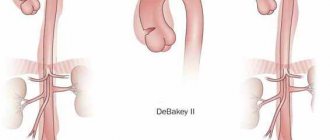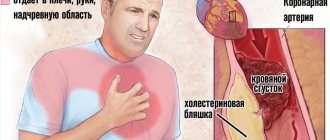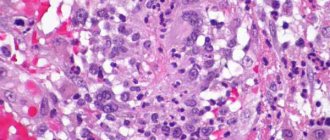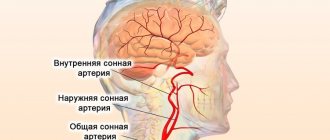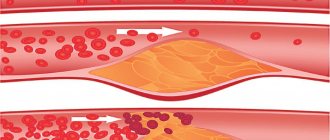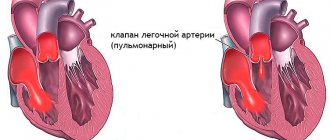1082
0
Hodgkin's lymphoma (HL), also called lymphogranulomatosis, is an oncological disease in which a malignant process develops in the lymphatic tissues. Less commonly, it can affect non-lymphatic organs, for example, the thymus, bone marrow , spleen, liver. In such cases, they speak of an extranoid type of tumor.
With the described pathology, cells in the lymphatic tissues mutate from normal to giant multicellular ones, called “Berezovsky-Reed-Sternberg cells.” In addition, so-called mononuclear Hodgkin cells appear. As the disease progresses, they can spread through the circulating blood throughout the body. This is how the process of metastasis occurs in Hodgkin's disease . Both the first and second types of atopic cells are detected by microscopic examination of the affected tissues.
This oncological pathology got its name from the name of the doctor who first described it back in the 19th century - Thomas Hodgkin.
Men are more susceptible to lymphogranulomatosis than women. The disease predominantly affects representatives of the white Caucasian race. There are two “risk ages”: the first is the period from 15 to 35-40 years, the second is over 60 years. However, cases of Hodgkin lymphoma in children are not uncommon.
The prognosis for tumors of this type is quite favorable: based on the stage at which oncopathology is detected and treatment is started, it ranges from 45 to 95%. In general, experts speak of an 80% five-year survival rate for patients.
What is Hodgkin's lymphoma?
The disease has several names: lymphogranulomatosis, Hodgkin's disease, malignant granuloma - a tumor that attacks the lymphatic system. In fact, it is a cancer of this very system.
Hodgkin's lymphoma causes enlargement of the lymph nodes - cervical, supraclavicular or inguinal. The disease changes white blood cells - lymphocytes, and they degenerate into malignant ones. Later, the liver, spleen and lungs begin to change.
In newborns and young children (up to 4 years old), lymphogranulomatosis practically does not develop. Closer to adolescence, the risk of getting sick increases.
Main incidence peaks:
- from 14-15 to 20 years;
- after 50 years.
Young adults and men are 30 percent more likely to develop Hodgkin lymphoma than women.
Learn more about the disease from the video:
How to diagnose the disease?
To identify Hodgkin lymphoma, it is recommended to use the following types of diagnostics:
- Examination of the nasopharynx and tonsils by an otolaryngologist;
- Carrying out an excisional biopsy from a newly emerging lymph node;
- Palpation of lymph nodes of various locations and the spleen;
- Measurement of the rate of growth of lymph nodes;
- Studying the degree of intoxication of the body;
- Ultrasound examination (ultrasound) of the lymph nodes: neck, groin and thighs, supraclavicular and subclavian, axillary, peritoneum, as well as checking the spleen and liver;
- Study of platelet, erythrocyte and ESR levels;
- Computed tomography of cervical, thoracic, hip lymph nodes;
- Osteoscintigraphy of the skeleton (radionuclide visualization of the osteoarticular apparatus using the introduction of radiopharmaceuticals);
- X-ray of bones;
- Study of the level of thyroid hormones in case of damage to the cervical lymph nodes;
- Emission tomography (PET) is a radionuclide method for studying internal organs. According to the 5-point Deauville scale using PET, the effectiveness of diagnosing Hodgkin lymphoma is 5 points.
Types and stages of the disease
Hodgkin's disease is considered a “favorable” cancer, and a person has a great chance of getting rid of the disease.
WHO identifies several types of Hodgkin lymphoma:
- Nodular sclerosis. The most commonly diagnosed form - 80 percent of patients who are often cured;
- Mixed cell type . Occurs in 20 percent of granuloma cases. Quite an aggressive form, but the prognosis is still favorable;
- Dystrophy of lymphoid tissue . A very rare form, approximately 3 percent of cases. It is difficult to recognize, but the prognosis is unfavorable;
- Hodgkin's lymphoma with a large number of lymphocytes , also a rare form of the disease;
- Nodular lymphoma. Another rare type of disease, it occurs most often in adolescents. Symptoms do not manifest themselves and have a very slow course.
Hodgkin's lymphoma has a gradual progression:
- Stage 1 , only one part of the lymph nodes is affected (for example, only the cervical ones). It is practically not felt by a person at all.
- Stage 2 – involves two or more parts of the lymphatic system on one side of the chest. The process may begin to invade neighboring organs.
- Stage 3 – both sides of the diaphragm are affected, as well as the inguinal lymph nodes and spleen.
- Stage 4 - the disease affects the entire lymphatic system and other internal organs - liver, spleen, brain.
Doctors identify Hodgkin cells in the lymph nodes, and this confirms the disease.
At the first stage of the disease, there are practically no symptoms, or they can be confused with a regular ARVI. That's why it's so important to get checked every year, for example, take a blood test and visit a therapist .
Forms of the disease
What is Hodgkin's disease, and what forms of the pathological process are there? The question interests many patients who have been diagnosed with this disease. In hematology, a local and generalized form is distinguished. The local type of the disease is characterized by the fact that only the lymph nodes are affected. Based on localization, the following forms of Hodgkin's disease are distinguished:
- peripheral;
- pulmonary;
- mediastinal;
- cutaneous;
- nervous;
- bone
The generalized type of the disease is characterized by the fact that the malignant tumor also spreads in the following organs:
- stomach;
- spleen;
- lungs;
- liver.
Depending on the speed of spread of the pathological process, lymphogranulomatosis can have an acute or chronic course. The acute form lasts approximately several months, while the chronic form is characterized by a long, protracted course with alternating exacerbation and remission.
According to ICD-10, Hodgkin's disease code is C81. It refers to malignant neoplasms that have 4 forms, namely:
- lymphohistiocinar;
- mixed cell;
- nodular sclerotic;
- lymphoid depletion.
This takes into account the prevalence of the tumor process. Depending on the form of the disease, treatment methods are selected individually.
Forecast
Malignant granuloma responds well to treatment and a person can completely get rid of this disease. The main thing is to detect the disease in time. Then the chances are high - more than 85 percent of patients diagnosed with Hodgkin lymphoma are completely cured .
The forecast depends on several factors:
- Stage of the disease. Patients with stage 2 achieve remission in 90 percent of cases. From 3-4 – in 80 percent.
- Presence of metastases . Many organs and systems can be affected in such a way that their recovery is no longer possible.
- Risk of relapse . After treatment, the disease may return in 15 to 25 percent of patients. In this case, the prognosis is disappointing.
- Sometimes Hodgkin's disease simply does not respond to any type of therapy. However, this is rare.
If you do encounter this disease, do not think about how long people with Hodgkin lymphoma live. With successful treatment, life expectancy will not decrease.
Prevention of Hodgkin's disease
Prevention of the disease includes universal anti-cancer measures carried out to prevent all types of oncology:
- Avoiding exposure to radiation, ionizing radiation.
- Avoid contact with toxic substances and chemicals.
- Increasing the efficiency of immune function.
- Rationalization of the food system.
- Beneficial physical activity.
- Hardening the body.
- Regular exposure to fresh air.
Effective ways to prevent lymphogranulomatosis include periodic medical examinations that help identify early symptoms of the disease.
Share your opinion about the material presented in the article. We are waiting for yours
Causes
It is not known for certain why Hodgkin lymphoma occurs. There are only theories and assumptions:
- Infections and viruses (Epstein-Barr virus, herpes type 8, infectious mononucleosis). Causes rapid destruction of lymphocyte forms;
- Hereditary predisposition;
- HIV (due to decreased immunity);
- Exposure to carcinogens (for example, hazardous factors at work);
- Diseases of the immune system.
Hodgkin's lymphoma is not contagious . But the exact cause of the disease has not yet been found.
Classification
Based on the histological structure, the classification of non-Hodgkin lymphomas has the following types:
- classical Hodgkin's lymphoma - this form of the disease is characterized by a large number of lymphocytic cells;
- Hodgkin's lymphoma nodular sclerosis - a form of the disease caused by structural abnormalities in the fibrous tissues that penetrate the node;
- mixed-cellular form - all leukocyte cells are present in the neoplasm, and necrosis of the lymph node tissue is also observed;
- lymphoid depletion - manifested by the absence or decrease in the number of healthy cells, with fibrous tissue replacing healthy ones.
If nodular sclerosis is observed, symptoms hardly appear. As it develops, the lymph nodes enlarge. There is also a possibility that this syndrome may develop due to viruses.
Symptoms
At the initial stage of development, Hodgkin lymphoma is almost impossible to notice. The disease is most often detected already at stages 3-4 of the disease.
Malignant granuloma has the following symptoms in adults:
- Enlarged lymph nodes. The most famous sign. Most often, the cervical or submandibular lymph nodes become enlarged, and the person feels well. In other cases, the disease affects the groin area. Lymph nodes can grow to enormous sizes, but are usually painless. The photo shows the late stage of Hodgkin's lymphoma.
- Damage to the liver, spleen . In the case of Hodgkin's lymphoma, these organs become enlarged, sometimes very large, but do not cause concern to patients.
- Brittle bones , frequent fractures. These symptoms occur when metastases reach the skeletal system.
- Itching . It occurs due to an increase in the concentration of leukocytes.
- A painful cough that does not go away after taking the tablets.
- Shortness of breath . It can occur both during movement and in a calm state and occurs due to constriction of the bronchi.
- Difficulty swallowing . As a result of severe enlargement of the lymph nodes, saliva and food have difficulty entering the stomach.
- Edema.
- Constipation and diarrhea, abdominal pain.
- Nausea and vomiting.
- Excessive sweating.
- Sometimes there may be numbness in the arms or legs, or kidney problems. But with Hodgkin's lymphoma this is a rare occurrence.
In addition, the body's immune defenses are weakened, and a person may feel:
- Temperature rises to 39-40 degrees. Chills and muscle pain may begin. The patient takes all this as manifestations of the flu, but such symptoms are repeated again and again.
- Chronic fatigue , which does not allow you to do your usual things.
- The patient quickly loses weight in just six months, and develops frequent infections, including pneumonia.
To prevent the development of the disease, carefully monitor the condition of the lymph nodes, especially in children. Read here about childhood lymphadenitis.
Main symptoms
The nature of the symptoms of Hodgkin's disease is quite different, but for a long time the pathological process may not manifest itself in any way. This leads to the disease being diagnosed at later stages. Among the main symptoms of Hodgkin's disease are the following:
- enlarged lymph nodes;
- damage to internal organs;
- signs of a systemic nature.
The very first symptom of the disease is lymphadenopathy. It is characterized by local or widespread enlargement of the lymph nodes when the patient feels normal. Initially, an increase in nodes in the submandibular and cervical region is observed. There is a possibility of pathological processes occurring in other areas of the lymphatic system. In this case, symptoms such as:
- lymph nodes are enlarged;
- acquire an elastic consistency;
- not fused with surrounding tissues;
- mobile and painless.
As long as the lymph nodes do not come into contact with adjacent tissues and organs, this does not affect the patient’s well-being in any way. However, their increase leads to compression of nearby tissues, and this is manifested by symptoms such as:
- the occurrence of a painful dry cough;
- dyspnea;
- violation of the swallowing reflex;
- swelling caused by high venous pressure;
- indigestion;
- damage to the nervous system;
- renal dysfunction.
Symptoms of organ damage are caused by the spread of malignant neoplasms along the entire path of progression. All these manifestations must be taken into account when conducting diagnostics and determining the characteristics of therapy.
Systemic symptoms include fever, accompanied by pain, severe sweating and chills. This condition occurs periodically, but as the disease progresses it can be permanent. In addition, there are signs of neurasthenia, which manifests itself in the form of drowsiness, fatigue, as well as weakened vision and hearing. This mainly manifests itself in the last stages of the disease.
A person begins to rapidly lose weight as a result of dysfunction of many organs. Infectious pathologies often develop. That is why it is important to know what it is - Hodgkin's disease, and how exactly it manifests itself in order to recognize it in a timely manner.
Diagnosis of the disease
Due to the absence of symptoms at the onset of the disease and the variety of manifestations already in the later stages, Hodgkin lymphoma can be difficult to diagnose. Typically, the patient is referred to a hematologist by a general practitioner. And a specialized doctor prescribes tests:
- General blood analysis . A basic analysis does not determine the tumor, but allows you to evaluate some organ functions and suspect something is wrong. May be observed: decrease in hemoglobin, platelets. Leukocytes, monocytes, basophils and eosinophils will increase. Lymphocytes are significantly reduced. ESR, on the contrary, is increased (more than 25).
- Blood chemistry. In this analysis, the doctor sees the appearance of inflammatory proteins and their changes: fibrinogen, C-reactive protein, a2-globulin. In the later stages of the disease, bilirubin increases, ALAT and ASAT jump significantly.
To diagnose lymphogranulomatosis, the following is also used:
- X-ray . It will help you see enlarged lymph nodes, as well as changes in internal organs.
- Ultrasound . Used to study the size of lymph nodes, the degree of damage, the presence or absence of metastases in organs.
- CT scan Computed tomography allows you to study in detail both the location of the tumor and its composition. And also assess the state of the body at the moment as a whole.
- FGDS . Necessary for determining lymphoma metastasis.
- Bone marrow puncture . It is used in case of metastases in the tissue from which the particle is taken.
- Lymph node biopsy . It detects pathological cells quite accurately. To do this, the affected lymph node is removed and examined under a microscope.
In classical Hodgkin lymphoma, cells of the same name are found, an altered structure of the lymph node, as well as a huge number of leukocytes.
Diagnostics
The following are traditional methods for diagnosing this type of cancer.
- Visual diagnostics . Lymph nodes are palpated. Particular attention is paid to their location, including the throat, neck, supraclavicular, inguinal, popliteal areas, as well as a careful examination of the abdomen.
- Collecting anamnesis (presence of cases of the disease in the family, concomitant diseases, in case of relapse - the course of the disease and identifying the reasons for its resumption)
- X-ray studies , including computed tomography, positron emission tomography, ultrasound, nuclear magnetic resonance scanning.
- Ultrasound of the peritoneal organs, CT of the chest and bone scanning with radionuclides are more aggressive methods dictated by the need for further examination. Ultrasound scans with contrast are especially effective if lymphoma is located in the chest and abdomen, bones, liver, spleen, and kidneys. The lymph nodes;
- spleen;
- Waldeyer's ring (lymphadenoid pharyngeal ring)
- extralymphatic structures: liver, lungs, bones. Morphological diagnostics (the use of methods for studying the structure of the patient’s organs, tissues, and cells, that is, biopsy). Subject to examination:
Development in children
Newborns and children under 4 years of age usually do not develop this type of lymphatic cancer. The most common age of those affected is on average 14 years. But about 4 percent of primary and school-age children still get sick.
Children do not feel the onset of the disease. But later the following signs may appear:
- The child often gets tired, becomes lethargic and indifferent to everything.
- You may notice enlarged lymph nodes in the neck or groin, which do not go away for a long time.
- The child is rapidly losing weight and eats little.
- Symptoms of itchy dermatosis will appear.
- Fluctuations in body temperature, appearing and then disappearing again.
- There may be heavy sweating, especially at night.
- All this does not bother the child. However, later, very slowly, the symptoms increase, changes begin in the liver and spleen.
Attention! In children under three years of age, the lymph nodes are always slightly enlarged. They are also always increased in ARVI and other infectious diseases. Therefore, only a doctor can distinguish one disease from another.
If the doctor suspects lymphogranulomatosis, the child is given the same diagnosis as an adult . And if concerns are confirmed, they are sent to a hospital.
Stages
The stages of progression are determined based on the extent of the lesion.
There are the following stages of Hodgkin lymphoma:
- The first stage - in most all cases, there are no signs. Most often, the disease is detected by chance, during an examination for another reason. Tumor growths are detected in one of the lymphatic groups, or in any one nearby organ.
- The second stage - the oncological process spreads to several lymphatic groups located above the thoraco-abdominal septum. Formations are identified in nearby structures.
- The third stage - pathological foci increase in size on both sides of the diaphragm, and an increase in affected areas is observed. The spread of formations occurs in the internal organs and surrounding soft tissues.
- Stage 4: Stage 4 of Hodgkin lymphoma is considered severe. The pathological process spreads to important organs, for example, the liver or spleen. Stage 4 oncology causes disruption of the functionality of important organs. Treatment at this stage is difficult, since the pathology is already significantly widespread throughout the body, and tumors can recur.
At the first symptoms indicating the development of a tumor, you should immediately seek the help of specialists.
Illness in pregnant women
It poses a big problem both in diagnosis and treatment. All manipulations must be carried out under the supervision of a gynecologist.
Due to pregnancy, a woman may feel a significant deterioration in her health, however, fortunately, the disease develops slowly, which means doctors have time to try to achieve a stable remission in the patient.
In the early stages, radiation therapy is unacceptable . In severe cases, doctors recommend an abortion, due to the threat to the patient's life.
Treatment of a pregnant woman is practically excluded . Doctors are taking a wait-and-see approach. They try to help the patient carry the baby to term, and immediately begin therapy after birth. Naturally, breastfeeding the child is excluded. There is no risk of transmitting the disease to the child.
Nutrition
Following a proper diet for Hodgkin lymphoma, especially after treatment with chemotherapy, can improve the condition. The diet should consist of:
- dairy products;
- fresh vegetables and fruits;
- lean varieties of fish and meat.
You should eliminate processed foods, alcohol and carbonated drinks from your daily diet. It is also worth limiting the consumption of salty, sweet, fatty and fried foods.
Treatment
The patient is hospitalized in the oncology department and the most suitable treatment method is selected:
- Radiotherapy;
- Chemotherapy;
- Surgical intervention.
Radiation therapy is most effective in the early stages of the disease . The course of treatment is about a month. During this time, 15 sessions are carried out and the person is likely to go into stable remission.
In the later stages, drug therapy is added to radiation, that is, chemotherapy with antibacterial and antitumor drugs (Adriamycin, Bleomecin), nucleic acid synthesis blockers (Cyclophosphamide), etc. Hormonal drugs such as Prednisolone are also used.
In the first two stages, one radiotherapy or radiation therapy plus two courses of “chemo” is usually sufficient. At stages 3-4, at least 9 courses of chemotherapy .
The doctor individually selects a treatment regimen suitable for the patient, based on his condition, stage of the disease and the presence or absence of metastases.
Criteria for adequate treatment:
- Reduction or even disappearance of some lymphoma symptoms;
- Reduction of lymph nodes in size;
- During the study, tumor cells disappear.
If the disease cannot be treated, then a so-called DHAP regimen , consisting of three drugs: Cisplatin, Cytarabine and Dexamethasone.
In extreme cases, when other means do not help, surgery is used. Too large formations are removed ; the spleen may be removed. The surgical method is resorted to to save the patient’s life.
To suppress the side effects of chemotherapy and radiation therapy, the patient is prescribed drugs that enhance immunity, as well as vitamins.
All treatments actually kill healthy cells in the body .
Therefore, at the end of treatment, the patient will have to undergo a complex bone marrow transplant operation.
Description of the disease
Hodgkin's disease is a type of cancer that affects the lymph node system. During uncontrolled division, one extralymphatic organ is affected, and its functionality is impaired. When this type of lymphoma occurs, as in cases with non-Hodgin lymphoma, few people know what it is, which is why patients do not immediately consult a doctor.
In Hodgkin's lymphoma, the pathology alternately affects the lymph nodes, most often related to regional ones. This disease affects people of any age group, but oncology is more common in children. The increased risk of morbidity depends on the age category; this group includes patients of transitional (14-30 years) and elderly (after 50 years) age.
As granulomatous cells progress, they replace healthy tissue, causing changes in the structure of the affected organs. The tumor develops slowly, but if therapy is not started in a timely manner, malignant cells can provoke disruption of the functioning of important organs, which can lead to death.
Causes
So far, experts have not been able to definitively determine the specific causes of lymphogranulomatosis. Some scientists are inclined to believe that the disease has a viral etiology. They believe that the root cause of Hodgkin lymphoma is the Epstein-Barr virus, which provokes the development of cellular changes and mutations at the gene level.
In addition, experts have identified several factors that provoke pathology:
- Radiation exposure;
- Living in unfavorable environmental conditions;
- Working with carcinogenic or chemical substances such as pesticides, benzenes, herbicides, organic solvents, etc.;
- The presence in the family history of ancestors with pathologies of the lymphatic system (a controversial factor)
The occurrence of lymphomas is often affected by anti-cancer drugs used in chemotherapy treatment or hormone-based drugs. In addition, autoimmune diseases such as lupus, rheumatoid arthritis, etc. can affect the presence of pathology.
Contrary to popular assumption, the genetic factor is not particularly important in the formation of lymphomas. Although if a lesion is found in one of the identical twins, then the other twin will also have it.
Complications
For patients with Hodgkin's lymphoma and non-Hodgkin's lymphoma, the main danger is complications. Damage to the lymph nodes of the cervical spine can affect the functioning of the ligaments and create difficulties during meals.
Through metastasis it is possible:
- pulmonary edema;
- kidney and liver failure;
- heart failure.
If lymphoma grows in the spinal cord, transverse paralysis may develop. With acute progression of the disease, the formation of multiple organ failure is possible, which can result in death.
A recurrent form is also possible, which manifests itself when the treatment regimen is violated. A relapse can also be triggered by increased physical activity or pregnancy.
Treatment of lymphogranulomatosis
The main directions in the treatment of lymphogranulomatosis are:
- Use of polychemotherapy.
- Use of radiation therapy.
- Combination of radiation and chemical therapy
- Use of chemicals in toxic doses with bone marrow transplantation upon completion of treatment.
Radiation therapy
Treatment of stage 1-2 lymphogranulomatosis in the absence of cachexia and fever occurs through irradiation with a dose of 3600-4100. Radiation therapy for Hodgkin lymphoma is carried out under a special device and is aimed at the affected groups of lymph nodes. Healthy tissues are protected by lead filters. With proper and timely treatment, radiation therapy reduces the chance of relapse of lymphogranulomatosis and in 85% of cases long-term remission occurs.
Use of polychemotherapy
Chemotherapy is used according to regimens that involve the use of a combination of certain drugs. Chemotherapy for Hodgkin's lymphoma according to the BEACOPP plan includes bleomycin, etoposide, adriamycin, cyclophosphamide, vincrastine, procarbazine, prednisolone and various variations of regimens.
The diet for Hodgkin's lymphoma should fully compensate for the energy lost during treatment with highly toxic drugs. Restoration of suppressed regeneration is achieved by increasing the amount of protein in the diet.
Combination therapy
Chemotherapy for Hodgkin lymphoma in combination with radiation treatment shows the best results. When approaching treatment with a combination of methods of influencing the pathology, the recurrence of Hodgkin lymphoma is reduced by 90% and remission is achieved at 20 years.
Treatment of Hodgkin's lymphoma in Germany can also be carried out in the terminal stages. A combination of chemotherapy drugs and surgical interventions with removal of lymph nodes that negatively affect internal organs or bone marrow transplantation has a positive effect on the health of patients.
Symptoms of lymphogranulomatosis
Hodgkin's disease most often begins with lesions of the cervical and supraclavicular lymph nodes.
A later sign of lymphoma is the transition to the mediastinal lymph nodes: this occurs in almost half of the cases. In the later stages of lymphogranulomatosis, pathological changes in internal organs and manifestations of a systemic malignant process begin.
Clinical signs
Due to the fact that the enlarged lymph nodes compress the bronchi, esophagus, and vessel walls, a varied clinical picture arises:
- the patient may suffer from coughing and suffocation;
- dysphagia occurs (difficulty swallowing food);
- swelling appears (when the superior vena cava is compressed, the face may swell, and when the lower vena cava is compressed, the limbs may swell);
- disruptions occur in the gastrointestinal tract (diarrhea, constipation, obstruction);
- Rarely, disturbances in the functioning of the central nervous system and kidneys are possible.
Symptoms of damage to internal organs
With Hodgkin's disease the following are observed:
- enlarged liver and spleen;
- lung damage (in 10% of cases);
- development of aplastic anemia;
- pathological bone fractures;
- symptoms of dermatosis, skin itching (cause - increased bilirubin).
Systemic manifestations of lymphoma
Systemic signs:
- temperature up to 40;
- feeling of chills;
- profuse sweating;
- weakness, exhaustion, decreased immunity (in later stages).
Increased susceptibility to other infections:
- herpes zoster;
- candidomycosis;
- chicken pox;
- toxoplasmosis;
- atypical pneumonia;
- meningitis, etc.
Stages of lymphogranulomatosis
LGM has four stages:
- The first degree is damage to lymph nodes of one group, for example, cervical or supraclavicular, or some organ.
- The second degree is damage to several groups of lymph nodes above or below the respiratory diaphragm.
- Third degree - total damage to the nodes on both sides of the diaphragm with or without hepatomegaly, splenomegaly and other symptoms of organ damage. The third stage is divided into two substages: 3(1) - the lesion affects the upper abdominal cavity;
- 3(2) - the pelvic region or aortic area is affected.
How to decipher the stage of Hodgkin's lymphoma
When doctors detect lymphoma in a patient’s medical record, they usually write the diagnosis not in words, but in standard symbols:
- the letter A means the absence of clinical symptoms;
- B - there is one of the following signs (high temperature, weight loss, heavy sweating);
- E - there is damage to other tissues and organs;
- S - spleen affected;
- X - there is a large voluminous formation.
Lymphogranulomatosis in children
It is a rare disease in children between six and sixteen years of age. The disease often begins with a painless lump appearing on the child’s neck—an enlarged lymph node. It is also possible, but less common, for such a node to appear in the mediastinum (sternum) and even more rarely in the abdominal or groin area. There may be no other symptoms of lymphoma at first.
Alarming symptoms:
- temperature;
- excessive night sweats;
- poor appetite and sleep;
- frequent illnesses of the child.
Clinical signs may include an enlarged spleen, but it is not always possible to palpate it. Hepatomegaly is considered an unfavorable sign.
Lymphogranulomatosis in children requires the earliest possible diagnosis and treatment: one or two nodes must be removed before the onset of systemic symptoms, followed by a course of radiation.
Damage to many lymph nodes and organs requires a different treatment regimen using chemotherapy. One of the treatment options for children is autologous bone marrow transplantation.
What is inguinal lymphogranulomatosis
There are two different diseases that are sometimes confused:
- Hodgkin's disease (malignant lymphoma), which can also affect the pelvic region: involvement of the inguinal lymph node usually occurs in 10% of cases at stage 3 (2).
- An STD called lymphogranulomatosis inguinalis, which affects the inguinal lymph nodes, is a sexually transmitted disease that is caused by chlamydia. The infection penetrates the genitals and has characteristic symptoms.
Both diseases are treated completely differently:
- for Hodgkin's disease, chemotherapy, radiotherapy, and surgical methods are used;
- For venereal inguinal lymphogranulomatosis, antibiotics, sulfa drugs, and antimony are used.
